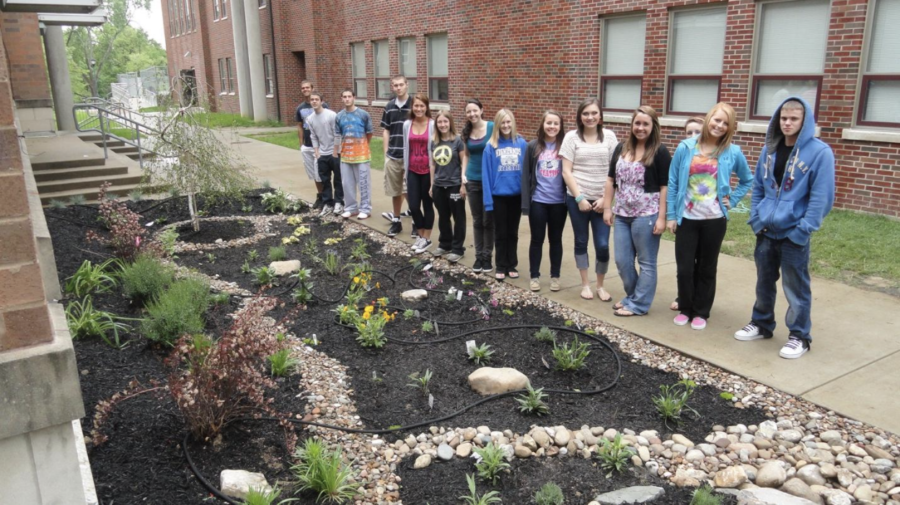Hidden Wonders of Highlands; The HHS Rain Garden
The first construction of the rain garden.
What once was a swampy, muddy mess is now a beautiful scene for all the students of Highlands to enjoy. Bright flowers, fascinating bugs, and a thick layer of green line the side of a building. A butterfly glides past and milkweed bugs feast on a plant. A sign reads “Highlands Highschool Rain Garden”.
This garden is not only here for its aesthetic advantages, but also to prevent erosion and flooding under the pedway. It was created as a Service Learning project for an AP environmental science project. The class worked with Colleen Epperson, a science teacher, and the Highlands Green Club. The project was originally created to prevent natural weathering and erosion, but it also served as a model so that students in multiple classes could observe the results of high-impact weather.
Epperson started the project in 2010, however, due to illness in the family, it was postponed until 2011. Thanks to donations from students, support from Epperson’s family, and a grant from the Ohio River Foundation, the project was ready to go.
The garden became a resource for multiple different science classes. Epperson not only brought her AP environmental class out to take note of the changes to the garden, but she attempted to bring outdoor learning to all of her classes. For example, when her chemistry students were learning about water, Epperson took them out to the rain garden to take notes and observe how water affected the garden.
Today, the garden is still expanding. Through good years and bad years, the garden has remained healthy and happy. Thanks to the addition of new pollinator plants, the garden is looking better than ever.
The rain garden is home to a variety of different plants and insects. Plants in the garden include brightly colored flowers such as Black-Eyed Susans, Hyperciums, and Buddleja Davidii, also known as “Summer Lilac”. In addition, popular pollinator plants such as Phlox, Milkweed plants, and Eutrochim, also known as “Spotted Joe Pyeweed” grow in the garden.
These gorgeous plants aren’t the only wildlife in the garden, however. The garden also attracts many types of insects. Some insects found in the garden include Monarch butterflies, a variety of different types of caterpillars, praying mantises, and milkweed bugs.
There has also been some news about future plans with the area around the rain garden as well. In an email, Epperson said, “The proposed Outdoor Space will be located outside Tonya’s (now Mary B.’s) room. This space will be accessible, have shade, and have tables made from the caps we have been collecting.”
The benefits of the rain garden include much more than a flood wall. This beautiful landmark expresses Highlands pride, is an extremely useful resource for many classes, and is home to so many different types of wildlife. The garden will stay a resource for many students.
Your donation will support the student journalists of Highlands High School. Your contribution will allow us to cover our annual website hosting costs.



